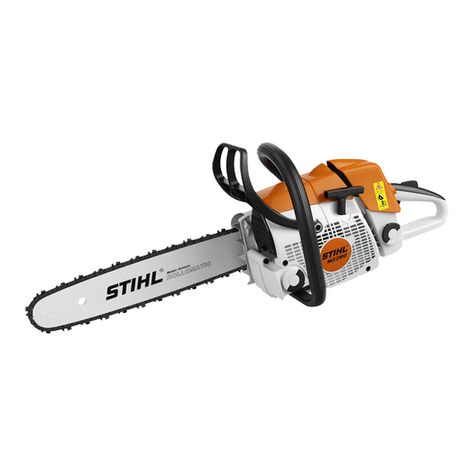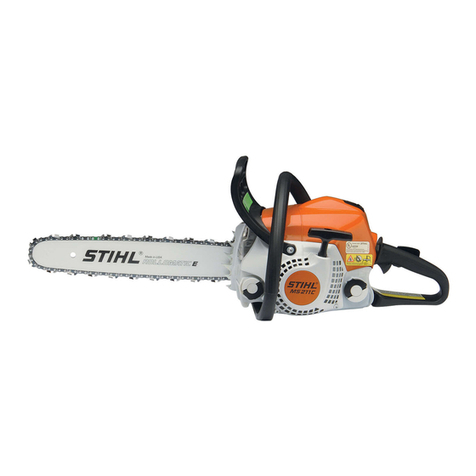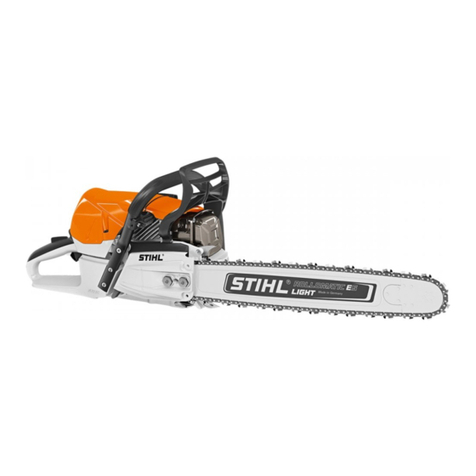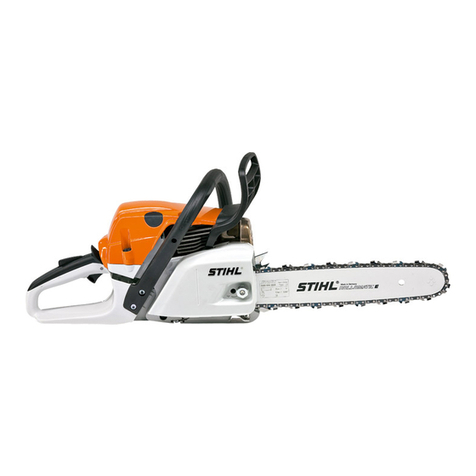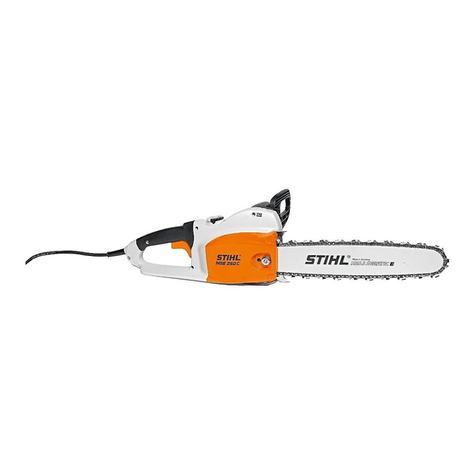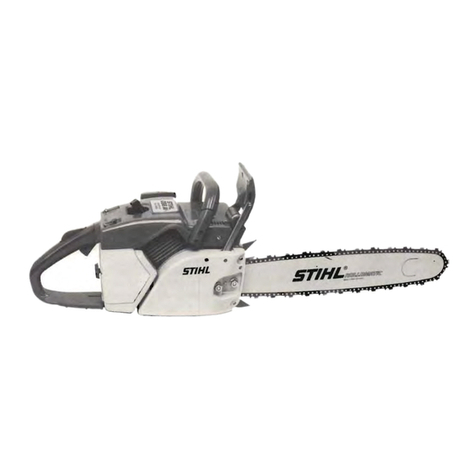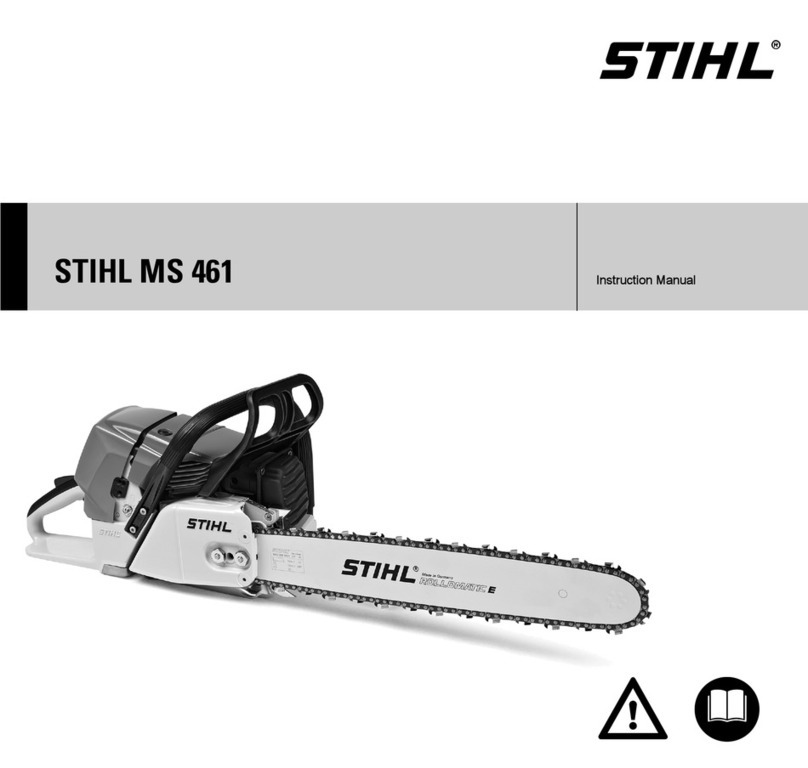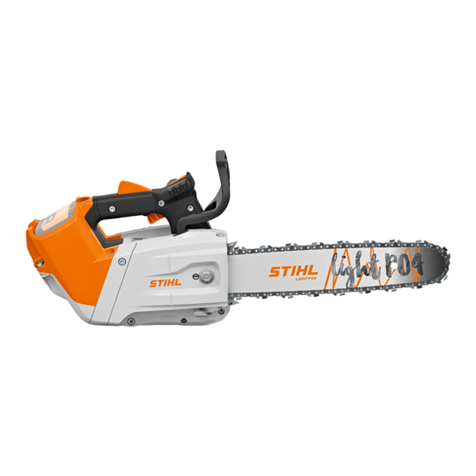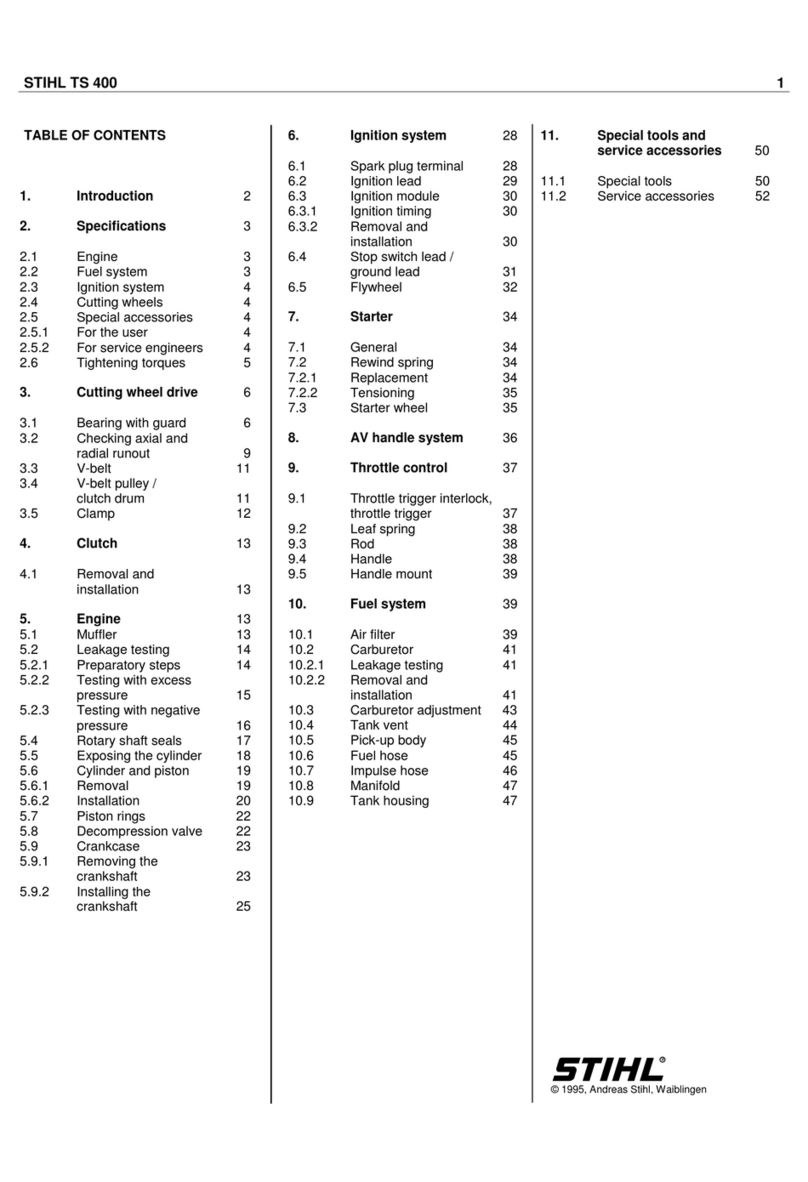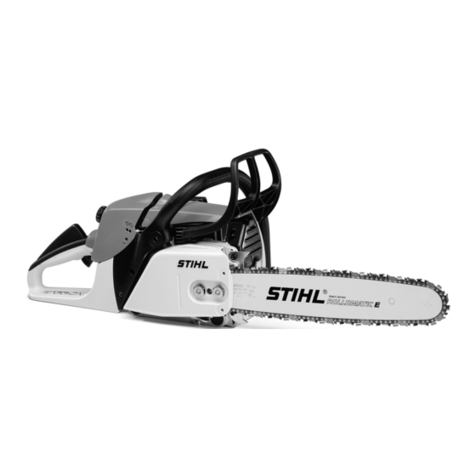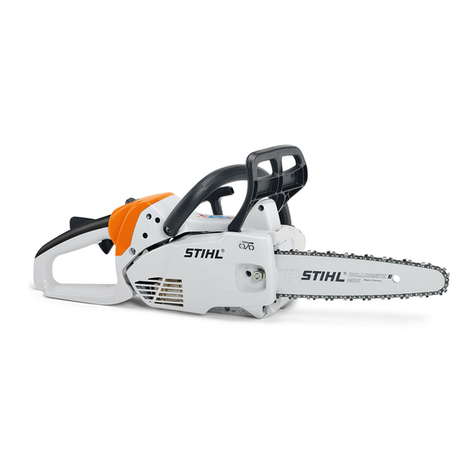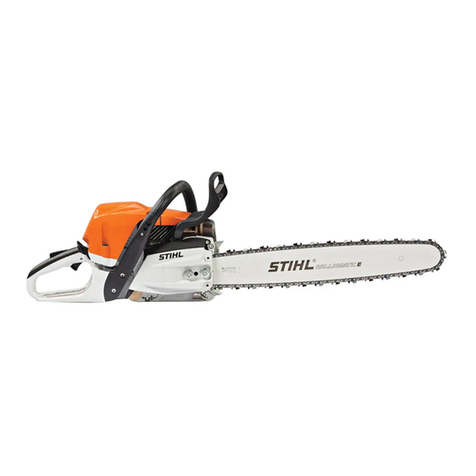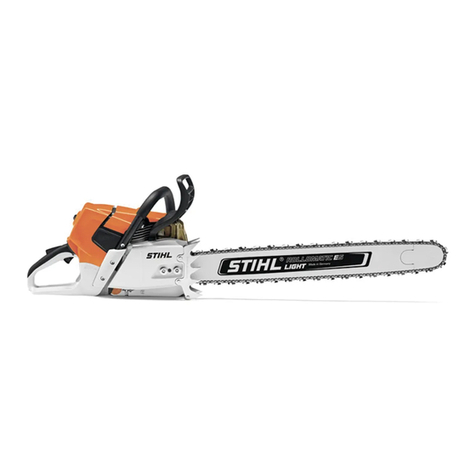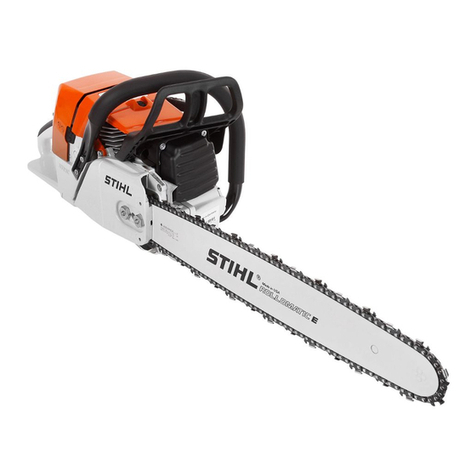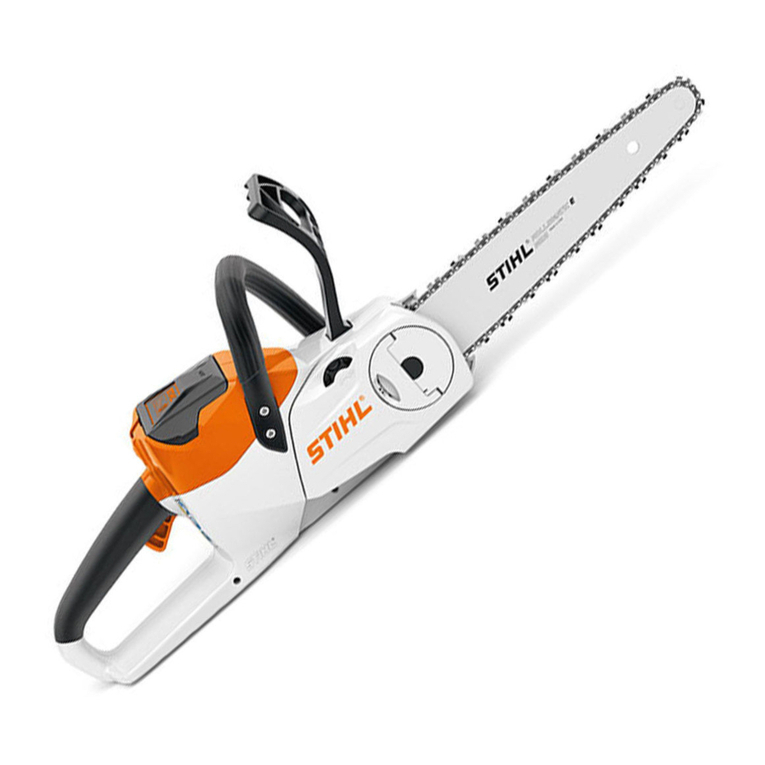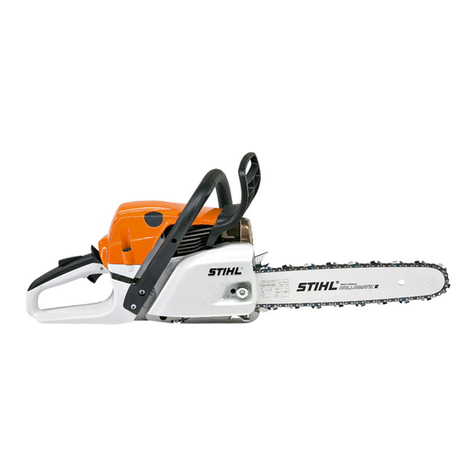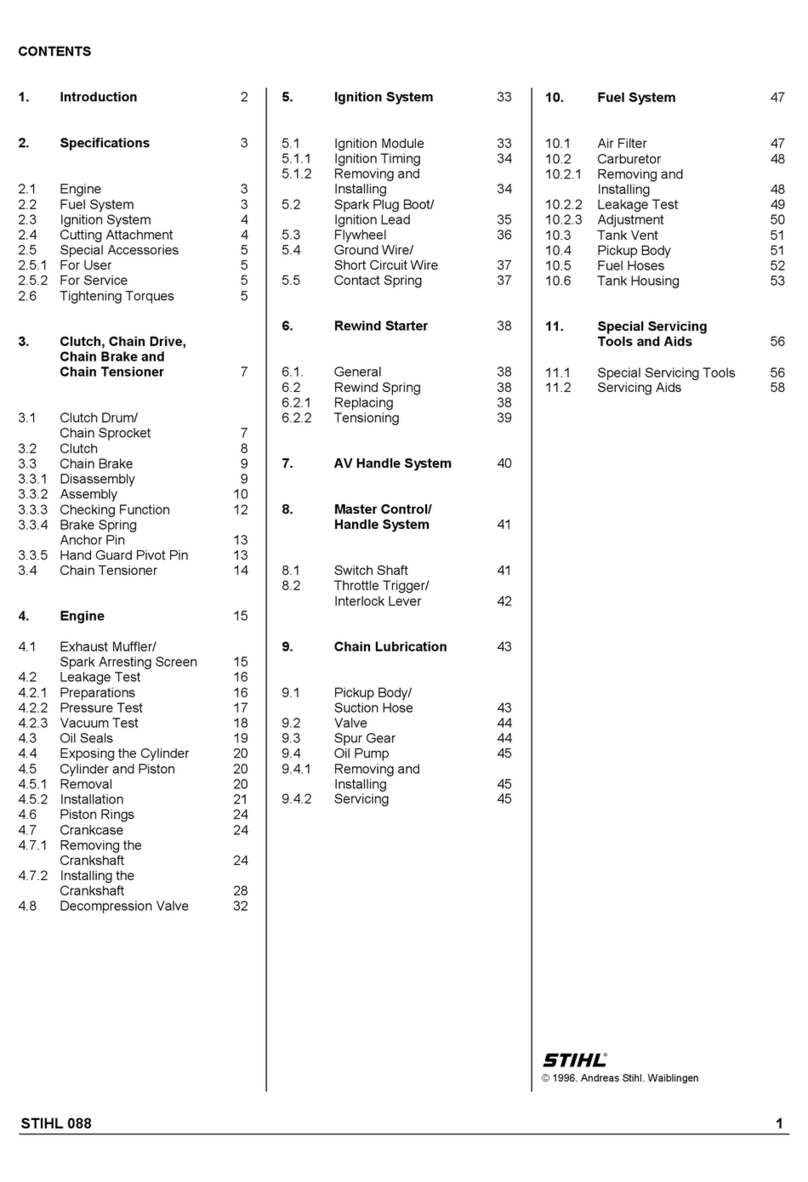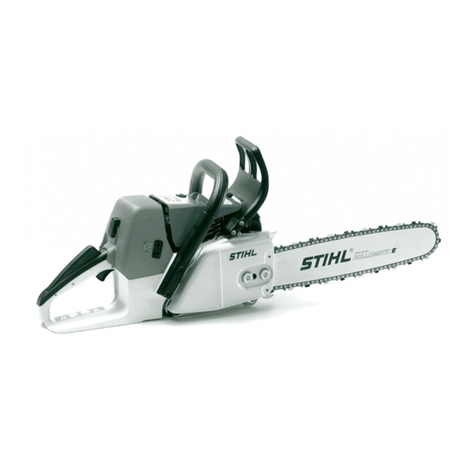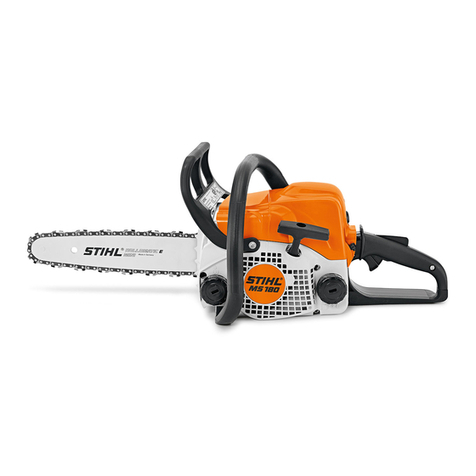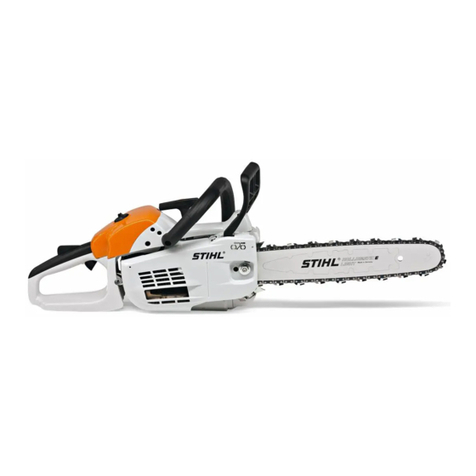
3MS 200, MS 200 T
1. Introduction
This service manual contains
detailed descriptions of all the repair
and servicing procedures specific to
this power tool.
You should make use of the
illustrated parts lists while carrying
out repair work. They show the
installed positions of the individual
components and assemblies.
Refer to the latest edition of the
relevant parts list to check the part
numbers of any replacement parts.
A fault on the machine may have
several causes. To help locate the
fault, consult the troubleshooting
charts for all assemblies and
systems in this manual and the
"STIHL Service Training System".
Refer to the “Technical Information”
bulletins for engineering changes
which have been introduced since
publication of this service manual.
Technical information bulletins also
supplement the parts list until a
revised edition is issued.
The special tools mentioned in the
descriptions are listed in the chapter
on "Special Servicing Tools" in this
manual. Use the part numbers to
identify the tools in the "STIHL
Special Tools" manual. The manual
lists all special servicing tools
currently available from STIHL.
Symbols are included in the text and
pictures for greater clarity.
The meanings are as follows:
In the descriptions:
:= Action to be taken as shown
in the illustration above the
text
– = Action to be taken that is not
shown in the illustration above
the text
In the illustrations:
APointer
aDirection of movement
@4.2 = Reference to another
chapter, i.e. chapter 4.2
in this example
Service manuals and all technical
information bulletins are intended
exclusively for the use of properly
equipped repair shops. They must
not be passed to third parties.
Servicing and repairs are made
considerably easier if the machine
is mounted to assembly stand (3)
5910 890 3100. To do this, secure
the mounting plate (2) 5910 850
1650 to the assembly stand with two
screws (1) and washers.
The screws must not project since
they, depending on the machine,
may damage housings when the
machine is clamped in position.
1
2
3
219RA000 TG
The above operation is not
necessary with the new assembly
stand 5910 890 3101 since the
mounting plate is already fitted.
After removing the chain sprocket
cover, bar, chain and clutch drum,
the bar stud is pushed through the
upper hole (arrow) in the mounting
plate and secured with the nut (1).
The machine is held in position on
the mounting plate by the screw
head on the crankcase.
Always use original STIHL
replacement parts.
They can be identified by the
STIHL part number,
the STIH) logo and the
STIHL parts symbol K
This symbol may appear alone on
small parts.
Storing and disposing of oils and
fuels
Collect fuel or lubricating oil in a
clean container and dispose of it
properly in accordance with local
environmental regulations.
161RA405 TG
1
